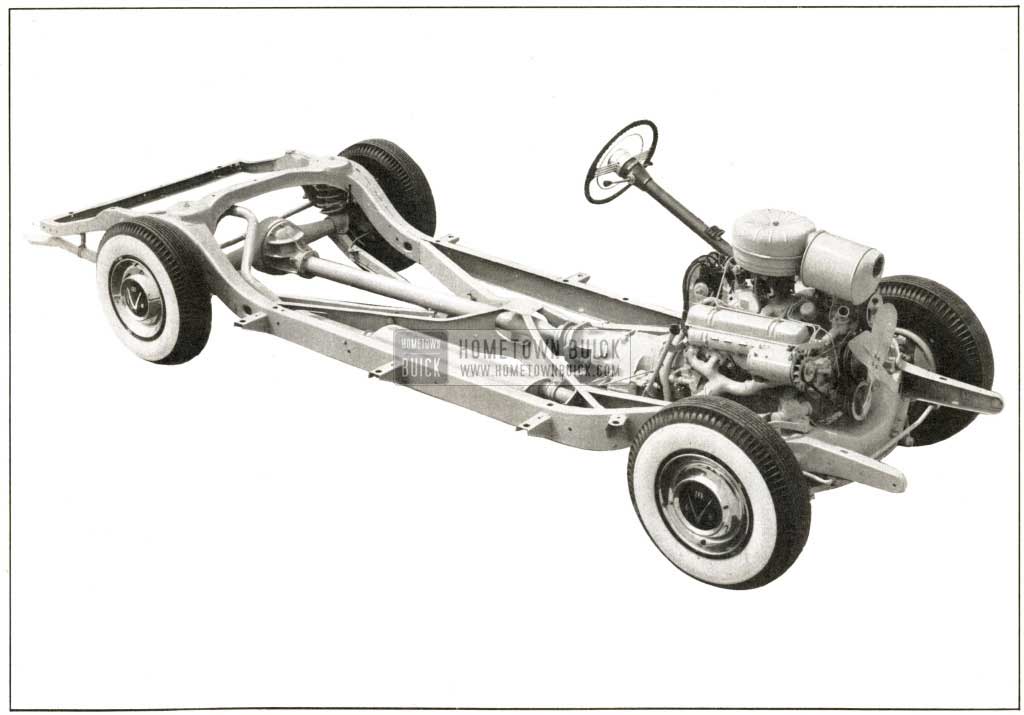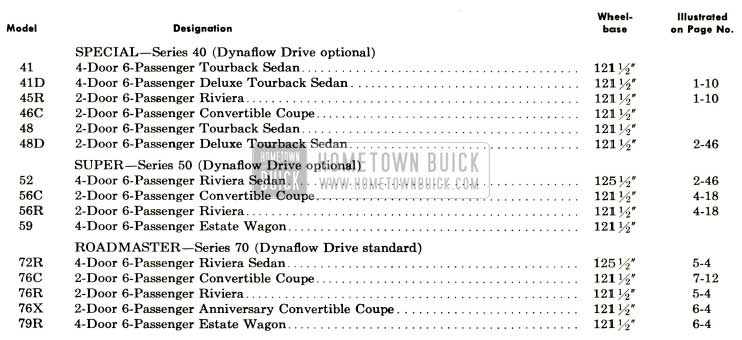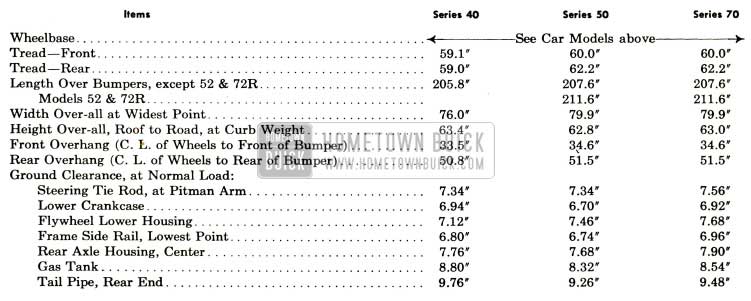1953 BUICK GENERAL INFORMATION – INTRODUCTION
The 1953 Buick shop manual is divided into major Groups, Sections, and Paragraphs as explained below. The purpose of this arrangement is to bring related subjects closely together in accordance with the usual methods of performing service operations, and consequently to present information in a logical and easily understood order.
Any desired subject in the 1953 Buick shop manual may be located by reference to the alphabetical index at back of manual.
Any desired subject also may be located by turning to the first page of the appropriate Group where contents of the Group are listed. Where the Group is divided into Sections the first page of each Section lists the contents of the Section.
- GROUPS. The manual is divided into the consecutively numbered major Groups shown on the preceding title page. To locate the first page of a Group, bend the manual until the black tab on first page of group can be seen in line with the Group title on title page.
The first page lists the contents of the Group.
- SECTIONS. Large Groups are divided into appropriate Sections as shown on first page of the group. Sections bear the Group number and letters A, B, C, etc., in alphabetical order.
The first page of each Section lists the contents of section.
- PARAGRAPHS. Each Group is divided into appropriate Paragraphs which are numbered consecutively within the Group, whether or not the group is divided into sections.
Paragraph titles and page numbers are listed on the first page of each Section if used, or on first page of the Group if sections are not used.
- SUB-PARAGRAPHS. Where necessary for clarity, or distinction between models, Paragraphs are divided into appropriately titled Sub-paragraphs. These are usually lettered in alphabetical order within the paragraph.
- PAGE AND ILLUSTRATION NUMBERS. Pages and illustrations are numbered consecutively within each Group. The number consists of the Group number followed by the Page or Figure number. Page numbers are printed in the upper outer corners of all pages. The small folio numbers at inner edges of pages are for printer’s use only and are not used for reference in the manual.
- CROSS REFERENCES. All references to information in other parts of manual are made by Paragraph Number, to avoid the necessity of first referring to the alphabetical index for location. Paragraph references are usually given in parentheses, for example: (par. 6-15) refers to the 15th paragraph in Group 6, “Chassis Suspension”.
- SERVICE BULLETIN REFERENCE. Space is provided on first page of each Section (or single section Group) for insertion of a reference to any B.P.S. bulletin which relates to the subjects covered by the section.
- SPECIAL TOOLS. Unless otherwise indicated, all special tools identified by tool numbers in the manual are available through Kent-Moore Organization, Inc., General Motors Building, Detroit 2, Michigan.

1953 Buick Series 70 Chassis
1953 BUICK MODELS

1953 Buick Model Overview
1953 BUICK GENERAL SPECIFICATIONS

1953 Buick General Specifications
1953 BUICK – CAR AND ENGINE SERIAL NUMBERS
The car serial number of a 1953 Buick is on a plate attached to the body on left front door hinge pillar and is also stamped on the left frame side rail near brake master cylinder. The first digit of serial number indicates where the 1953 Buick was built: 1=Flint, 2=Southgate, 3=Linden, 4=Kansas City, 5=Wilmington, 6=Atlanta, 7=Framingham.
The 1953 Buick engine serial number is stamped on a machined surface on the crankcase. On 1953 Buick Series 40 the number is on right side between the ignition coil and distributor. On 1953 Buick Series 50-70 the number is on the top outer edge of the left cylinder bank, between the middle branches of exhaust manifold. The last digit of engine serial number is 4 for Series 40, 5 for Series 50, 7 for Series 70. Series 50-70 numbers also have the prefix “V”. A stamped 1/4″ long dash (-) directly following the engine serial number indicates a .010″ O.S. production engine.

Leave A Comment
You must be logged in to post a comment.